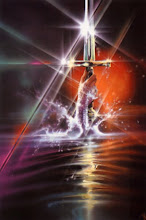 RAY BARRETTO’S chosen instrument was the congas, which he played with a powerful percussive style famous for its endless flexibility. Yet he was far more than the best conguero of his generation. As musical director of the legendary Fania All Stars, he helped to pioneer the Latin-jazz movement often referred to as “Nuyorican”, in recognition of its Puerto Rican roots and adopted New York base.
RAY BARRETTO’S chosen instrument was the congas, which he played with a powerful percussive style famous for its endless flexibility. Yet he was far more than the best conguero of his generation. As musical director of the legendary Fania All Stars, he helped to pioneer the Latin-jazz movement often referred to as “Nuyorican”, in recognition of its Puerto Rican roots and adopted New York base. He also made a string of brilliant and influential records as a dynamic and adventurous band leader in his own right, and was a sought-after session player across the worlds of jazz, Latin and rock music. In the course of a career spanning more than half a century, he could boast that he had played with everyone from Charlie Parker to the Rolling Stones.
Born into a Puerto Rican family in Brooklyn in 1929, he grew up in the tough ghetto areas of Harlem and the Bronx, influenced not only by Latin rhythms but by the swing bands of Duke Ellington, Count Basie and Benny Goodman.
In 1946 he joined the Army and, while stationed in Germany, he began playing percussion at regular jam sessions at the Orlando, a GI jazz club in Munich. According to legend, he did not have a congas so he removed the strings from a banjo and used its skin as a drum head.
He was much influenced by Dizzy Gillespie’s groundbreaking Latin-jazz fusions, and on his return to Harlem he took formal percussion studies, jammed with jazz greats such as Charlie Parker, Max Roach and Art Blakey and reconnected with the rhythms of the Latin music of his youth.
By the early 1950s Barretto had joined Eddie Bonnemere’s Latin Jazz Combo and then graduated to the band led by the Cuban pianist, José Curbelo, before his big break came in 1957 when he replaced Mongo Santamaria in Tito Puente’s band. His first day as a band member was spent in the studio recording Puente’s Dance Mania, now regarded as one of the seminal Latin jazz albums of its era. He stayed with Puente until 1961, when he briefly joined Herbie Mann ’s band.
That same year he made his debut as a band leader with the album Pachanga with Barretto. It was followed immediately by Latino, an album of Latin jam sessions that took the traditional Cuban flute and violin line-up known as charanga and reinvented it with the addition of blaring sax and trumpet.
Switching to the Tico label in 1962, Barretto followed with Charanga Moderna, another excursion in the same style, and the following year he had a Top 20 hit with the Latin-pop novelty dance number El Watusi. Away from salsa, he kept his hand in as a jazz musician, playing sessions with the likes of Sonny Stitt, Eddie “Lockjaw” Davis, Cannonball Adderley, Freddie Hubbard, Cal Tjader and Gillespie.
But his brush with the pop charts for a while appeared to leave him uncertain in which direction to go, and it was not until he signed to Fania Records in 1967 that he again found his way. Starting with Acid (1967), over the next eight years he made ten superb salsa albums for the label, featuring various vocalists including Adalbarto Santiago, Tito Allen, Rubén Blades and Tito Gómez. Among his most memorable releases were Indestructible (1973), an album which also provided him with a popular nickname, and Barretto (1975), which was nominated for a Grammy award.
In 1968 he had become a founder member of the Fania All Stars, a glittering firmament of the biggest names in New York salsa. Founded by Jerry Masucci, the owner of Fania, and the singer Johnny Pacheco, Barretto became the band’s musical director as the All Stars went on to become one of the most influential bands in the history of Latin music, releasing a stream of brilliant recordings and becoming an explosive live attraction.
A sold-out concert at the New York Yankee Stadium was hyped as “the Latin Woodstock” and their live show was captured in the 1976 film Salsa. That same year they made their only British appearance at the Lyceum in London.
By the 1980s the All Stars was in decline, but Barretto remained an unstoppable force. After briefly leaving Fania for Atlantic in the late 1970s, he returned in triumph to make a string of fine albums, including an acclaimed teaming with the singer, Celia Cruz and his former lead vocalist Adalbarto Santiago on the 1983 album Tremendo Trio! A second album with Cruz, Ritmo en el corazón, won them a Grammy award in 1990.
In the 1990s he recorded with a sextet, New World Spirit, and in later years he returned to a more jazz-dominated style. His final release, Time Was — Time Is, appeared in 2005 and was nominated for a Grammy as best Latin jazz album.
Barretto suffered from asthma and was admitted to hospital in January after a heart attack. He was also treated for pneumonia and underwent quadruple bypass surgery.
He is survived by his wife, Annette “Brandy” Rivera, and their four children.
Ray Barretto, percussionist, was born on April 29, 1929. He died on February 17, 2006, aged 76.





No comments:
Post a Comment